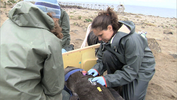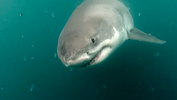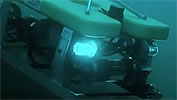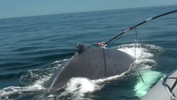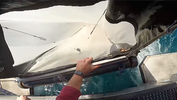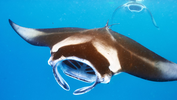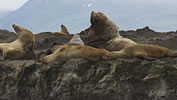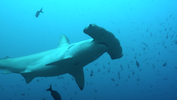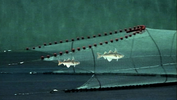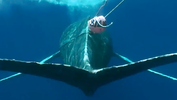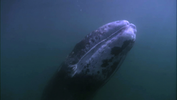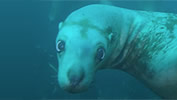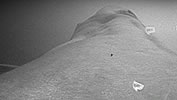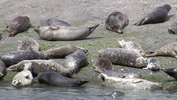The Wandering Seal
By tracking and studying the seals along their migration route, scientists are hoping to find the answers that will help ensure the seals' survival.
Researching Great White Sharks
Attaching a tracking device on a white shark doesn't just provide a thrilling rush of excitement and adventure!
Exploring the Ocean with Robots
Tagging a Humpback Whale
A well-placed camera or acoustic recording tag on a humpback whale allows researchers to track its underwater movements and observe its behavior.
The Tucker Trawl
How do scientists find out what food is available to marine mammals and seabirds? They use a system of special nets called a "tucker trawl."
Filter Feeding Mantas
Manta rays feed on plankton and fish eggs by gliding through the water with their mouths wide open.
Investigating Steller Sea Lion Populations
Why are Steller sea lion populations continuing to decline on the western part of their range in the northern Pacific Ocean?
Endangered Sharks
There are over 450 species of sharks! With sizes that range from as big as a school bus to as small as your hand…
Reducing Bycatch
How to Disentangle a Whale
Every year, hundreds of thousands of whales and other marine mammals die when they become entangled in fishing gear or marine debris and drown.
A Sustainable Seafood Restaurant
Gray Whale Migration
With their massive bodies and streamlined forms, gray whales are one of nature's most graceful giants…
Sea Lions
Steller sea lions, also called northern sea lions, are the largest species of sea lions.
Blue Whale Barrel Roll
Blue whales, which can grow to about 90 feet, are the largest animals by weight known to have ever lived on Earth.
Seal Locomotion
Harbor seals and northern fur seals belong to the pinniped family. "Pinniped" means fin or flipper-footed.
